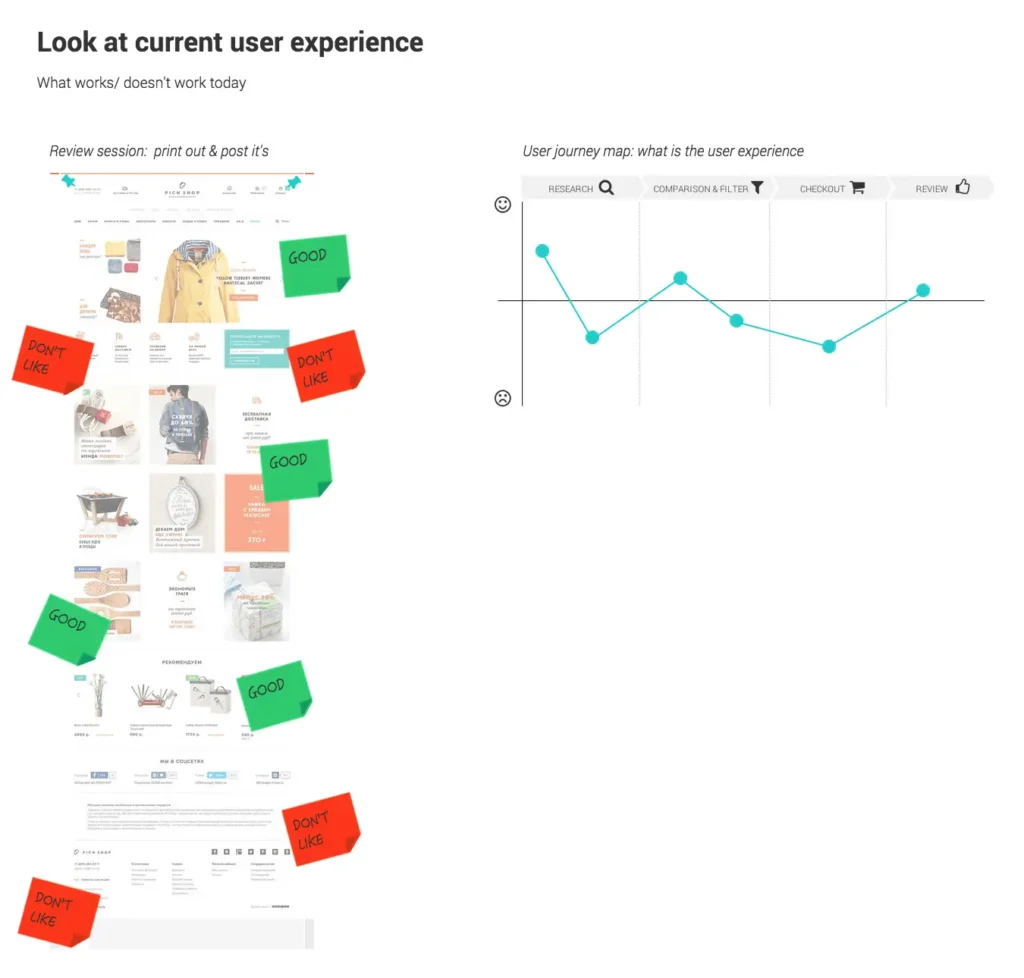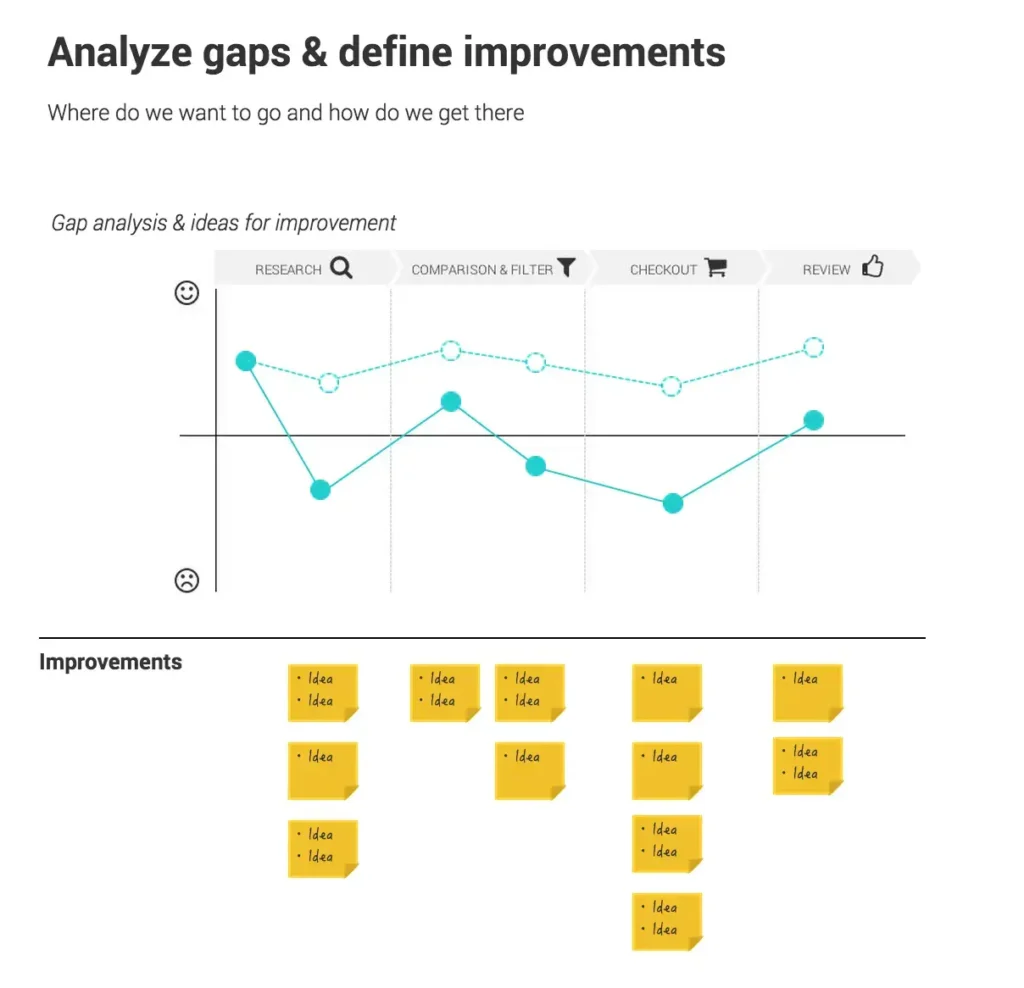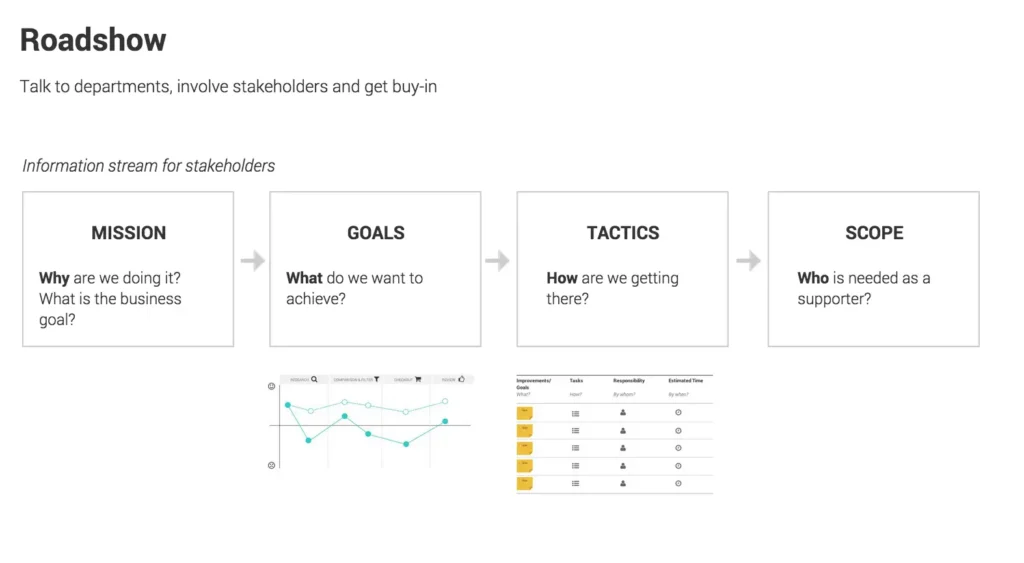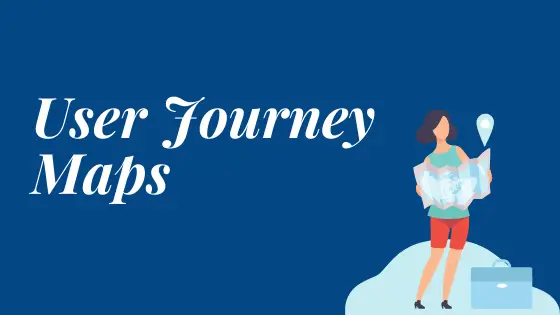I was lucky enough to participate in one of Sara Wachter-Bottcher’s amazing content strategy workshops and found new inspiration. It got me particularly thinking about my current usage of user journey maps and the problems I encounter with them.
Journey maps are a great tool to think about the big picture (what is the main user goal, where are people coming from, what are they looking for) and to identify the pain points. Getting an understanding about user needs and current frustrations will also help to visualize an “ideal path” that defines the optimal outcome for a project. A user journey map is therefore a powerful tool to use at the beginning of a project.
Because this tools helps to see the bigger picture it often uncovers new areas of impact. I often find myself in the following scenario: we create a journey map at the beginning of a project with the core team. While discussing the user needs and frustrations we often discover topics and problems that are related to different departments where stakeholders haven’t been involved yet. This can lead to confusion and ambiguity about the actions that need to be taken to improve the user experience, especially if the timeline is tight.
The solution to this problem: involve stakeholders and share the user journey map. Do a roadshow to get buy-ins. Create a bigger picture – not just for the user experience but also for your organization! Get a better understanding of the organizational structure, the existing departments, their responsibilities – and invite everyone to become part of the project vision.
So here are some steps that I will take as a guidance for my next project, inspired by the content workshop I attended:
- Create the “big picture” with a user journey
- Bring steps in order
- Use expert review to define user experience
- Analyze the gaps and create the “ideal journey”
- Define an action plan
- Do a roadshow and create “detailed” user journeys
1. Create the big picture
Start with a brainstorming session with the core team: list every step and action that a user needs to do to achieve a specific outcome.

2. Bring steps in order
Position the steps and actions on a timeline and define the main sections.

3. Define the user experience by adding emotions
Go through each step and think about how the user would feel. A helpful source of information can be an expert review of the existing product: hang print outs with screenshots on the wall and add post it notes. Use 2 different colors for things that are working very good and things that create frustration.

4. Create the ideal journey
Look at the user journey map and the current path: where are the pain points? Have a discussion about the ideal path: how do we want the user to feel? Look then at the gaps and do another brainstorming session to come up with ideas for improvements.

5. Define an action plan
Go through the ideas for improvements and turn them into actions: What do we want to achieve, how are we doing it, who is responsible and by when do we want to get it done?

6. Do a roadshow
With a good understanding of the current situation, user’s pain points, the ideal journey and the tasks that can be done for improvement go to the different departments and invite them to a discussion. Get their buy-in, ask for their support and listen to their input.

Because in the end: we are all getting better if we work together 🙂
